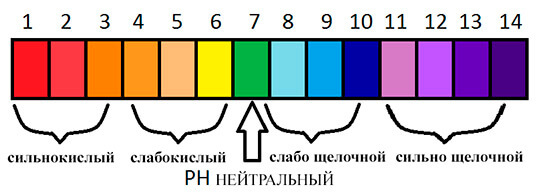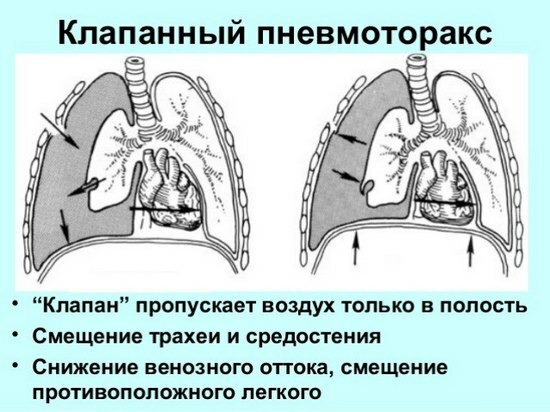Shortness of breath (dyspnea): causes of shortness of breath, treatment of shortness of breath
Shortness of breath (dyspnea) - a change in the frequency and depth of breathing, designed to increase the amount of oxygen entering the body. At this moment, a person has a feeling of lack of air, as well as rapid breathing and heartbeat.
Inhalation and exhalation disturbances are not in themselves a disease and can occur in response to environmental changes or exercise. If shortness of breath at rest worries, and shortness of breath is a frequent occurrence, you should consult a doctor.
These symptoms can signal serious health problems.
The article will help you understand what shortness of breath is, describe the causes of bad breathing and how to eliminate the ailment.
Content
- Etiology of the problem
- Physiological norms of the frequency of respiratory acts
- Symptoms
- Breathing problems with heart disease
- Breathing disorder in diseases of the lungs and airways
- Breathing disorder with pathologies of the nervous system
- Types of breathing disorders
- Causes of mixed shortness of breath - heart failure and serious lung disease
- Diagnostics
- Shortness of breath treatment
- Drug therapy
- Surgery
- Treatment with folk remedies
- Exercises
- Prophylaxis
- Forecast
- Related Videos
Etiology of the problem
The only reason why shortness of breath occurs and the heartbeat becomes more frequent is a lack of oxygen in the blood and tissues. In this way, the body tries to restore balance in order to prevent serious disturbances in the functioning of organs.
The feeling of shortness of breath can occur in a healthy person. It is provoked by:
- excessive physical activity (especially in untrained people);
- in conditions of rarefied air (at high altitudes);
- excitement, stress;
- late pregnancy;
- closed rooms;
- foreign body in the airways.
Chronic bad breath is observed in people suffering from osteochondrosis, intercostal neuralgia or herniated discs.
The main pathological reasons that make it difficult for a person to breathe are diseases:
- respiratory organs (bronchitis, asthma, pneumonia, pneumosclerosis, lung cancer);
- hearts (arrhythmia, Ischemic heart disease, pericarditis, heart attack, heart failure, neoplasms);
- nervous system (trauma, swelling, edema, stroke);
- anemia.
To factors that provoke heavy breathing and heart palpitations, include hypodynamia, obesity, smoking.
Shortness of breath in children occurs for the same reasons as in adults. But due to the fact that the young organism is more vulnerable, rapid breathing can cause even minor disturbances in homeostasis.

Shortness of breath in a child can be recorded against the background:
- hyperthermia;
- high temperature;
- excitement, stress;
- allergies;
- rhinitis;
- physical activity;
- laryngeal edema laryngitis;
- diphtheria;
- bronchial asthma;
- pneumonia;
- emphysema;
- heart disease;
- anemia;
- diseases of the immune system;
- virus infections;
- imbalance of hormones;
- the ingress of a foreign object into the respiratory system;
- cystic fibrosis (congenital anomaly).
Important! Rapid breathing, like a rapid heartbeat, in childhood is not always an alarming symptom. A healthy child makes more breathing movements than an adult.
Physiological norms of the frequency of respiratory acts
| Age | Quantity per minute |
| Newborn | 50-60 |
| 0.5-1 years | 30-40 |
| 1-3 years | 30-35 |
| 5-10 years | 20-25 |
| Puberty | 18-20 |
If your baby's breathing differs from average or causes concern, it is worth contacting a pediatrician. Only a doctor can reliably determine whether a child has shortness of breath.
Read also:Signs of pneumonia in an adult without fever: is it possible?
Symptoms

Dyspnea is characterized by general and specific symptoms. The latter are due to pathology, which resulted in shortness of breath.
Shortness of breath and shortness of breath have the following clinical picture (both in sick and healthy people):
- pain and pressure in the chest;
- unusual sounds during inhalation and exhalation (wheezing, whistling);
- trouble swallowing;
- feeling of a coma and tightness in the throat;
- breathing through the mouth;
- high blood pressure;
- cough;
- yawn.
Gasping for breath, most people begin to panic, so fear, nervous tremors, and inappropriate behavior are added to the main symptoms.
Shortness of breath in sick people is accompanied by symptoms specific to a particular pathology.
Breathing problems with heart disease
Shortness of breath and shortness of breath are accompanied by pain in the chest and behind the scapula. Observed cyanosis skin, swelling of the lower extremities. The patient does not have enough air when inhaling, and shortness of breath at rest is a frequent occurrence. With a severe course of the disease, a feeling of lack of air may occur when lying down (at night in a dream).
Breathing disorder in diseases of the lungs and airways

Cough and shortness of breath in a person signal a violation of the respiratory system.
The patient is equally short of air during inhalation and exhalation. In the early stages of the disease, rapid breathing appears only in case of physical exertion, then shortness of breath occurs when walking and minimal movements.
When the disease progresses to an extreme or irreversible stage, chronic bad breath is recorded.
Shortness of breath with bronchial asthma is a familiar phenomenon for almost 10% population of the planet. It is accompanied by attacks of suffocation, which most often occur in the morning or at night. The patient has a feeling of lack of air, chest pain, arrhythmia, enlargement of the veins in the neck join him.
In parallel, there is a dry cough. Choking, a person can lose orientation in space and the ability to respond appropriately. Sometimes an attack leads to seizures and loss of consciousness.
Breathing disorder with pathologies of the nervous system

Respiratory centers are located in the brain. Rapid breathing can result from structural abnormalities in the medulla oblongata. When the central nervous system is infected, tissue acidification and a decrease in oxygen levels occur, as a result of which the patient develops heavy breathing (frequent and noisy).
Lack of air when breathing is noted in people suffering from vegetative-vascular dystonia (VVD), due to a violation of the blood supply to organs and tissues.
Rapid breathing is accompanied by numbness in the fingers, ringing in the ears, dizziness. In people with VSD, shortness of breath is very common when walking, especially when walking quickly, and when walking up stairs.
Patients suffering from bouts of hysteria and other neurotic disorders may also experience shortness of breath. But such a violation of inhalation and exhalation is only superficial and directly depends on emotions. The person may shout “I’m choking,” but there will be no signs of hypoxia.
Read also:Sarcoidosis of the lungs, what is it: modern ideas about the causes, methods of diagnosis and treatment
Types of breathing disorders
Shortness of breath happens:
- Physiological. Shortness of breath on exertion, in the mountains or in a stuffy room.
- Pathological. It occurs due to a violation of the work of internal organs. Lack of air during breathing is felt not only during sports or other efforts, but also shortness of breath appears at rest.
Based on when there is a lack of air during breathing, the following types of shortness of breath are distinguished:
- inspiratory;
- expiratory;
- mixed.
Inspiratory dyspnea diagnosed if there is not enough air when inhaling. Problems arise against the background of narrowing of the lumens of the airways. In childhood, inspiratory dyspnea is a sign diphtheria or another throat infection.
A distinctive feature of the second type of dyspnea is difficult exhalation. It appears due to a decrease in the diameter of the bronchi and bronchioles. This type includes shortness of breath in bronchial asthma.
Causes of mixed shortness of breath - heart failure and serious lung disease

In medical practice, it is customary to distinguish 5 stages of the disease.
To determine the severity of the disease, the doctor finds out how often and under what conditions there is a lack of air during breathing:
- Initial. Shortness of breath during exercise, running, playing sports.
- Lightweight. Shortness of breath is noted when walking on rough terrain or walking in the mountains.
- Average. Heavy breathing occurs when walking at a normal pace and the person has to stop to recover.
- Heavy. A person needs to rest every 3-5 minutes.
- Very heavy. Dyspnea occurs at rest.
Diagnostics
Heavy breathing, which occurs even with minor exertion, is a reason for contacting a therapist. Only after examination and thorough diagnosis, the doctor will give an answer why there is not enough air when breathing and what to do next.
Diagnostics involves a survey and an initial examination. The doctor finds out if the patient was injured and what chronic diseases he has. The examination of the patient is carried out using a phonendoscope, which reveals the presence of wheezing and whistling. To clarify the clinical picture, laboratory tests are prescribed:
- blood analysis;
- general urine analysis;
- chest x-ray;
- electrocardiogram;
- Ultrasound of the heart;
- pulse oximetry (determines the degree of saturation of hemoglobin with oxygen);
- spirometry (measuring the volume and rate of respiration);
- capnometry (measurement of the amount of carbon dioxide during inhalation and exhalation).
If the patient at rest all indicators are normal, then exercise tests are performed. Such studies will help identify the causes of shortness of breath when walking and exercising. To do this, use a bicycle ergometer, or offer the patient to climb the stairs.
To make the correct diagnosis, the patient is examined by specialists in different fields: a pulmonologist, a cardiologist, a surgeon, an allergist, a neurologist.
Shortness of breath treatment

It is important for each person to know not only what it is - shortness of breath, but also to be able to provide first aid if necessary.
Algorithm of actions before the arrival of doctors:
- it is convenient to seat the patient or lay on his side;
- remove clothing that may obstruct breathing;
- provide an additional supply of oxygen (open a window or give (if available) an oxygen cushion);
- try to warm the limbs (massage, heating pad).
Read also:Symptoms and treatment of bronchitis in adults
People suffering from bronchial asthma should:
- avoid contact with the allergen;
- always have medicines with you (inhaler, mucolytics).
Drug therapy
Treatment of shortness of breath primarily involves the treatment of the disease itself, which became its cause. But to improve the quality of life of the patient, medications are used to stop the unpleasant symptom. The patient is prescribed an appointment:
- funds that expand the bronchi (Atrovent, Berodual, Ipratropium native);
- beta-adrenergic agonists (Salbutamol, Indacaterol);
- methylxanthines (Teotard, Teopek);
- inhaled steroid hormones (Ingakort, Pulmicort, Bekotide);
- mucolytics (Bizolvon, Lazolvan, Ambrosan);
- antispasmodics (Hyoscyamine, Buscopan);
- sedatives (Persen, Novo-passit);
- multivitamin complexes (Aerovit, Polivitaplex).
Surgery
Surgical treatment is used if it is necessary to remove a tumor that affects the parameters of inhalation and exhalation.
Treatment with folk remedies

What is breathing disorder - they have known for a long time, so traditional medicine has accumulated a lot of tips on how to remove shortness of breath.
- If a person does not have enough air when inhaling, to alleviate the condition, it is recommended to use an infusion of honey, lemon and garlic. For its preparation, take 0.5 liters of honey, 5 lemons and 5 heads of garlic. Juice is squeezed out of lemons, peeled garlic is crushed, and then everything is mixed with honey. The mixture is infused under a lid in a dark place for a week. Take 4 tsp. l. once a day for 2 months.
- If shortness of breath worries alone (especially important for overweight people), you can take an infusion of garlic and lemon juice. 175 grams of peeled and mashed garlic is mixed with juice from 12 lemons. The infusion is left in a jar for a day (covered with gauze on top), remembering to shake it regularly. Take 1 tsp. l. before going to bed, after having spilled it in a little water.
- Great benefits for the respiratory system generally carries fresh goat milk. It should be drunk on an empty stomach several times a day.
Important! The use of folk remedies must be carried out under the supervision of a physician!
Exercises
To facilitate breathing, doctors suggest performing the following actions:
- sit up straight and straighten your shoulders;
- place palms on the chest (below);
- breathe through your nose without taking deep deep breaths.
The exercise is performed every 40-45 minutes throughout the day.
Prophylaxis
There are no guidelines that can 100% protect against shortness of breath. You can reduce the likelihood of its occurrence if:
- quit smoking;
- to live an active lifestyle;
- exercise;
- control your weight;
- avoid stress;
- timely therapy for diseases that cause shortness of breath;
- regularly undergo preventive examinations.
Forecast
The prognosis for life is favorable. The exception is inspiratory dyspnea caused by the ingress of a foreign object into the respiratory path, as well as shortness of breath at rest, which arose against the background of severe diseases of the respiratory system, heart or injury.



